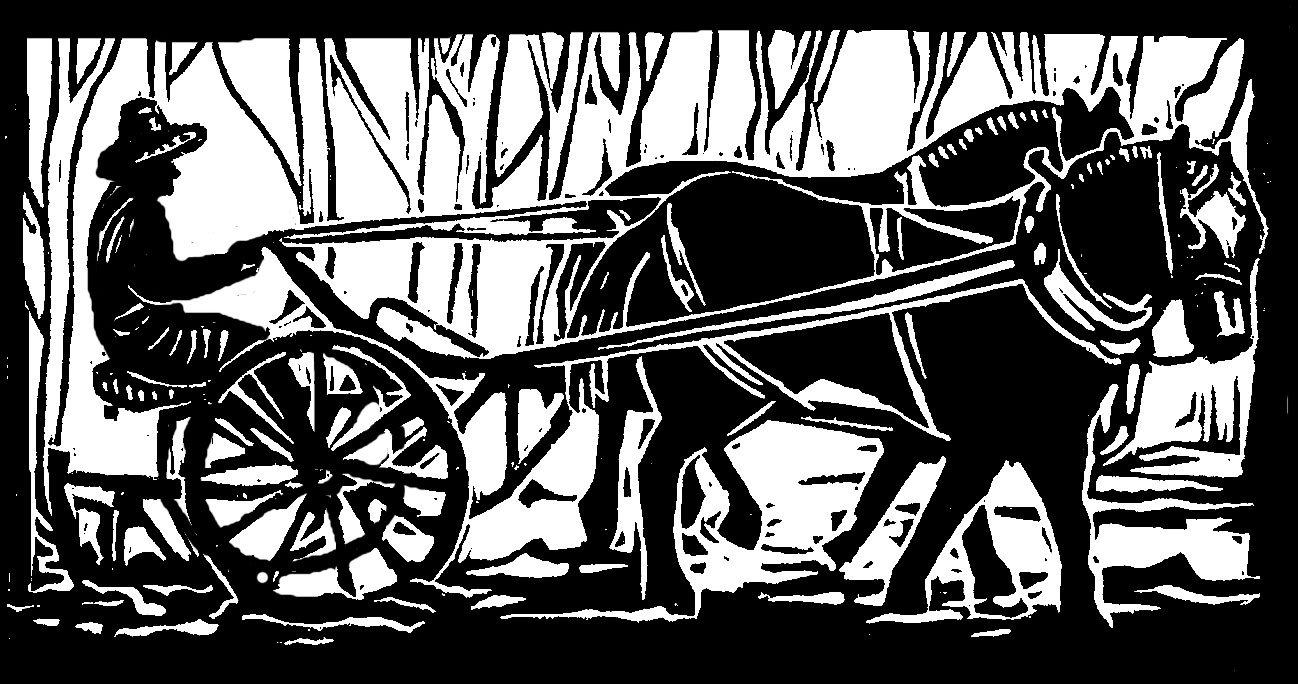My fellow farmer loves new projects. Of course, for a vegetable farm in New England, all of spring feels like a new project. The greenhouse is bustling, the trees and pastures begin to shimmer, the very air feels new.
The draft horses feel like a new project in the spring too, despite all three of them being over 18, and well seasoned. They've worked the fields and pulled every farm implement hundreds of times. Yet in the spring, after a winter of mainly lounging about, eating hay, the horses seem to think everything is new. What's this? A harness? A bridle? A forecart? And you're going to hitch us to it? Good heavens! The horses start out with a rush and a roar while my farmer fellow, the teamster, holds on.
“How did that go?” I ask doubtfully when he returns after an hour of driving around on the dirt roads. The horse are sweaty and huffing and puffing.
“Great,” my fellow says. “A few more times and they'll be all settled down.”
But even with all the newness of spring, my fellow farmer cannot help himself: he is constitutionally drawn to the new and exciting. There have been many news in our springs together as farmers, right from the start: a new baby, a new team of horses, a new greenhouse, new equipment, our first year with a CSA garden. A few years later, there was the new fam in NH, a new team of horses, plus one more: the new foal born on our farm. This was enough new to tide my fellow over a few years, and then he started casting his eye about.
There was the spring of the new plow, the spring of the new greenhouse, the spring of the next new greenhouse, and the next new greenhouse, there was the spring of the new irrigation system, the spring of the new disc, of the barnyard project, of pasture rejuvenation, the spring of our first maple syrup-making, the spring of the next new team of horses.
Gradually all those new projects are incorporated into the regular work of the farm, and alas, they are no longer new, which means my fellow gets a certain look on his face once more. In a lucky year, it will only mean a few crop experiments: daikon radish as a cover crop, or a few feet of ginger grown in the greenhouse, or hibiscus plants in the herb area.
But other years, such as last season, are different.
“I've got a great idea!” said my fellow.
I don't know whether to groan or to laugh. “Oh?” I say, as noncommittally as possible.
“Mushrooms! Let's grow mushrooms! They'd be perfect, we've got practically everything we need already, the woods and shade, the logs, and we just need to buy a couple tools, and the spawn. Doesn't that sound fun?”
“But you don't even like mushrooms much,” I object.
“But you love them!” he answers gleefully. “Wouldn't that be great? All the mushrooms you could ever want?”
“Hmm,” I say. And then I start my litany: how much would it cost, how would we find the time to do it, how are we going to market the mushrooms, etc.
Since my fellow has lived with me a long time, he understands that this is just an introductory conversation. Over the winter, he will answer all the questions, and in the spring, we will find ourselves with a brand-new mushroom project.
The project may be, is kind of, fun and great, but also a) cost more than it was supposed to b) took more time than it was supposed to and c) did not produce as much as quickly as it was supposed to.
“It's a nice long-term project,” my fellow reassures me. “You love long projects, and listen to these great names: shitake, oyster, lion's mane, blewit.”
“They are nice names,” I admit, “but when will we ever get mushrooms?”
“We'll probably get some oysters this fall, and then next year we'll have a lot, of everything. Probably,” he adds again, hedging his bets.
That fall, my fellow goes to check on his new project. He comes back jubilant. “Look! Look!” he calls. He has two shining white oyster mushrooms, freshly harvested.
“Wow,” I say, impressed despite myself. “They must be my birthday mushrooms!”
“Happy birthday!” says my fellow, smiling, and I saute the two delicious birthday mushrooms in butter, and eat them all up.
They are, yes, the only two mushrooms of the year, but that just keeps the romance alive. (Not only does it keep the romance alive, but it also gives a farmer something more positive than the unwelcome news of the pandemic virus to consider.) Thus my fellow orders up another variety of shitake, three new oyster varieties, and the all-new reishi.
“Nice, huh?” he chortles over the mushroom catalog.
“Fantastic,” I say, happy with my fellow, happy with the mushrooms, and really happy that the fun and new will carry on.
Originally published in the Monadnock Shopper News, April 8-14, 2020
